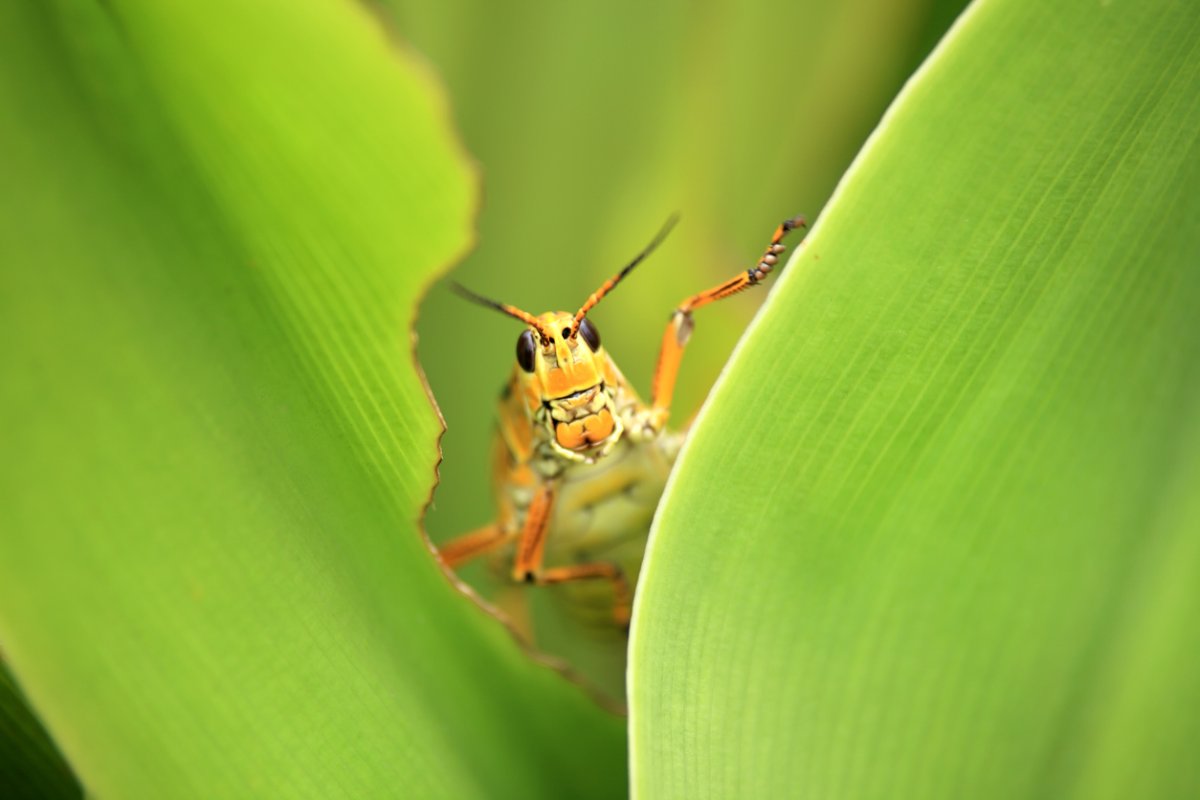

We may earn revenue from the products available on this page and participate in affiliate programs. Learn More ›
Whether you just spotted a grasshopper inside the house or have noticed a recent uptick in grasshopper damage in your garden, you’re likely asking the same question: How do you get rid of grasshoppers? It is important to note that a few grasshoppers can offer benefits to a garden. Several helpful insects and animals—including lizards, spiders, and birds—feed on grasshoppers. Grasshopper excrement can also work as a natural fertilizer for garden plants.
However, if you’re dealing with a large grasshopper infestation, acting quickly to get rid of them may be in your best interest. Large numbers of grasshoppers can cause major damage to vegetables and other plants in a garden. Read on to learn more about grasshoppers and some effective natural methods to get rid of them.
RELATED: Garden Wreckers: 13 Pests That Will Tear Your Plants Apart This Spring
What Are Grasshoppers?
Grasshoppers are medium-to-large insects that belong to the Orthoptera order. Adult grasshopper length can vary by species, with the smallest grasshoppers being just over ⅓ inch long and the largest around 2¾ inches long. In addition to their long hind legs that allow them to leap long distances, most grasshopper species have wings and can fly. Grasshoppers are typically brown, green, or gray, which helps them blend in with the various grasses and plants in their environment.
Unlike some other insects, grasshoppers tend to live alone. However, if there is a large amount of available food, a region’s grasshopper population can increase quickly, resulting in infestations. In most cases, the grasshoppers are simply all in the same location feeding, rather than acting together. However, one type of grasshopper, locusts, are capable of acting as a group and swarming, if the conditions are right. These behaviors can pose an even greater threat to gardens and crops.
Fortunately, grasshoppers do not sting (or even have stingers) and are unlikely to bite people. If a grasshopper does bite, it would likely only be in self-defense and wouldn’t be particularly painful since they have no teeth—only mandibles. It is more probable that a grasshopper will spit “tobacco juice” into the hand of anyone who picks it up. This liquid isn’t poisonous nor is it actual tobacco juice; it’s a combination of stomach enzymes and partially digested juices from the plants the grasshopper has eaten.
Identifying Grasshoppers
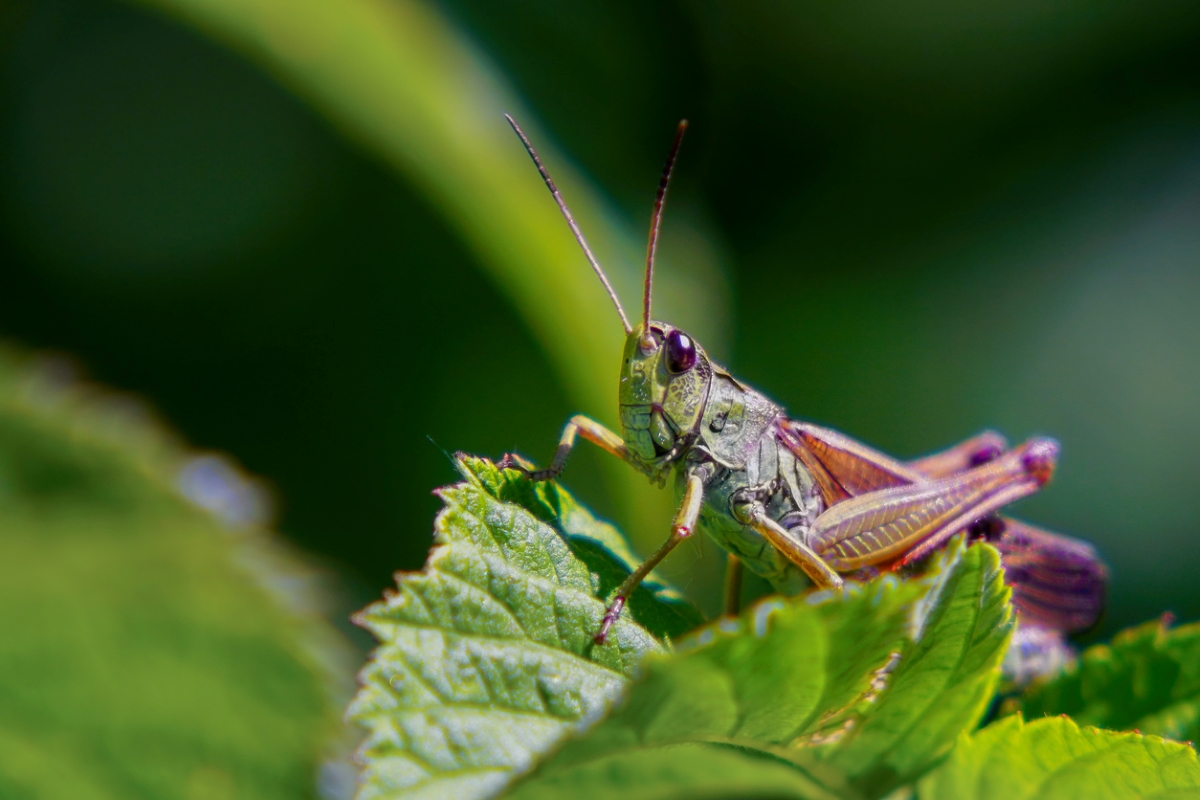
Identifying grasshoppers can be challenging; there are several grasshopper species and grasshoppers can look different depending on their stage in the life cycle. It’s also very common to confuse grasshoppers and crickets, but knowing how to identify grasshoppers is key to properly treating an infestation.
Common Types of Grasshoppers
There are more than 400 grasshopper species in North America, approximately 90 percent of grasshopper crop damage in the United States is caused by just four types of grasshoppers:
- Two-Striped Grasshopper (Melanoplus bivittatus): Two-striped grasshoppers are black and yellow with the two yellow stripes along their back meeting to form a triangle at the tip of the forewings. They grow to be between 1¼ and 2 inches long and are typically found among tall or herbaceous crops.
- Red-Legged Grasshopper (Melanoplus femurrubrum): Red-legged grasshoppers are brown with red tibias on their hind legs. They range between 1 and 1½ inches long and can be found in meadows and grasslands, as well as along crop borders, tall vegetation, and roadsides.
- Differential Grasshopper (Melanoplus differentialis): These brownish-yellow grasshoppers are approximately 1¾ inches long. They have a V-shape on their hind legs and are most commonly found living in woods, fields, or near water.
- Migratory Grasshopper (Melanoplus sanguinipes): Migratory grasshoppers have a reddish-brown color and are about 1 inch long. They are typically found in meadows, grasslands, and around crops. They are the most destructive grasshopper species in the United States and have been known to destroy crops such as corn, alfalfa, small grains, clover, and vegetables.
Grasshopper Life Stages
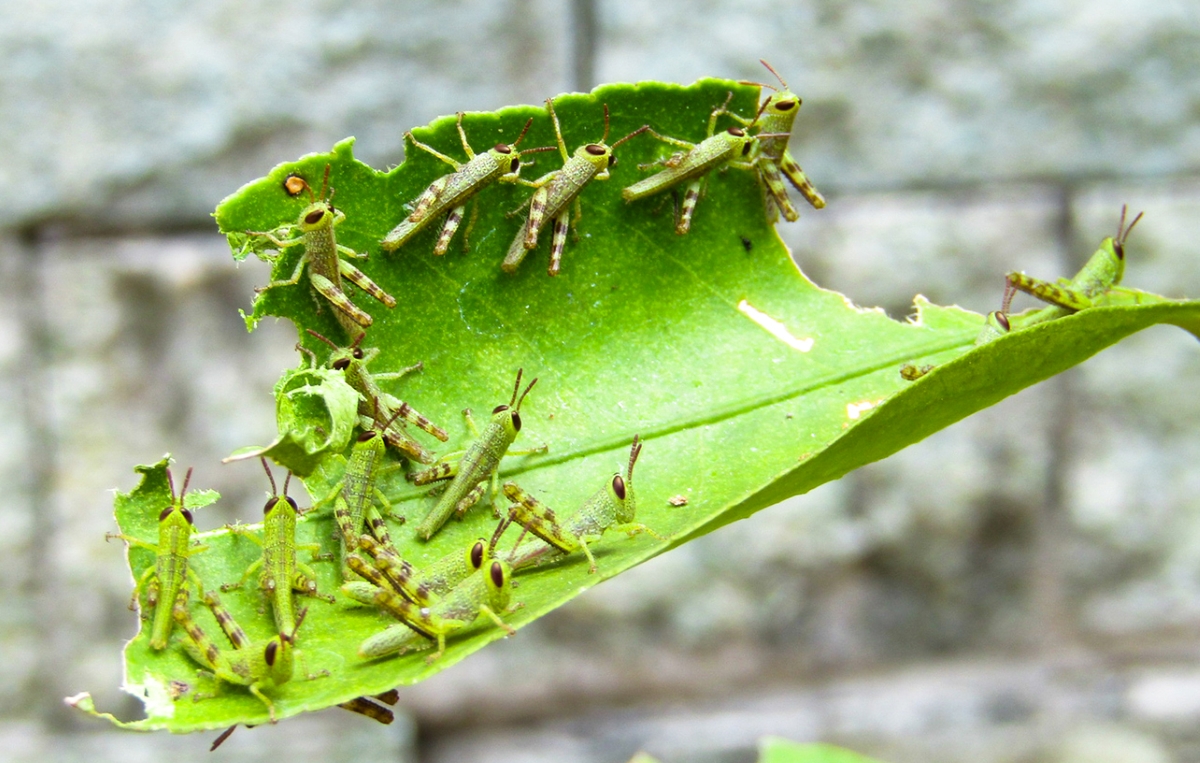
All grasshopper species follow the same three basic stages of metamorphosis: egg, nymph, adult.
- Egg: Female adult grasshoppers lay their eggs in groups that are kept together using a sticky secretion. The eggs are laid during either summer or fall in the soil, where they’ll remain until the following spring when they hatch. Grasshopper eggs are long, thin, and, depending on the species, come in varied colors.
- Nymph: After the eggs hatch, the emerging immature grasshoppers are referred to as nymphs. Grasshopper nymphs—which lack wings and are not yet able to fly—must progress through five instars before fully maturing to adulthood. Throughout this process, they will develop small wing pads that will be fully formed once they are adults.
- Adult: Adult grasshopper appearance varies based on the species, ranging from only about ⅓ inch to 2¾ inches long, with an average length of around 2 inches. The coloring of adult grasshoppers also varies by species, but common colors include brown, green, and gray. All grasshoppers have two antennae. Some have short antennae, while others have much longer antennae that are approximately the same length as their body. These two different categories of grasshoppers are referred to as short-horned grasshoppers (locusts) and long-horned grasshoppers.
Plant Damage
Grasshopper damage to plants will look similar to damage caused by other insects that use their jaws to gnaw. Gardeners are likely to notice several holes with jagged edges along different parts of plants, including the leaves, fruit, and stems. Some of grasshoppers’ favorite foods include corn, soybeans, alfalfa, small grains, clover, rice, beans, lettuce, and carrots. However, if there are several grasshoppers in the vicinity, they may also feed on other types of plants. While plant damage caused by grasshoppers can occur throughout the country, it is most common in the Central and Western U.S.
RELATED: 20 Tips for Keeping All Critters Out of Your Yard and Garden
How to Get Rid of Grasshoppers
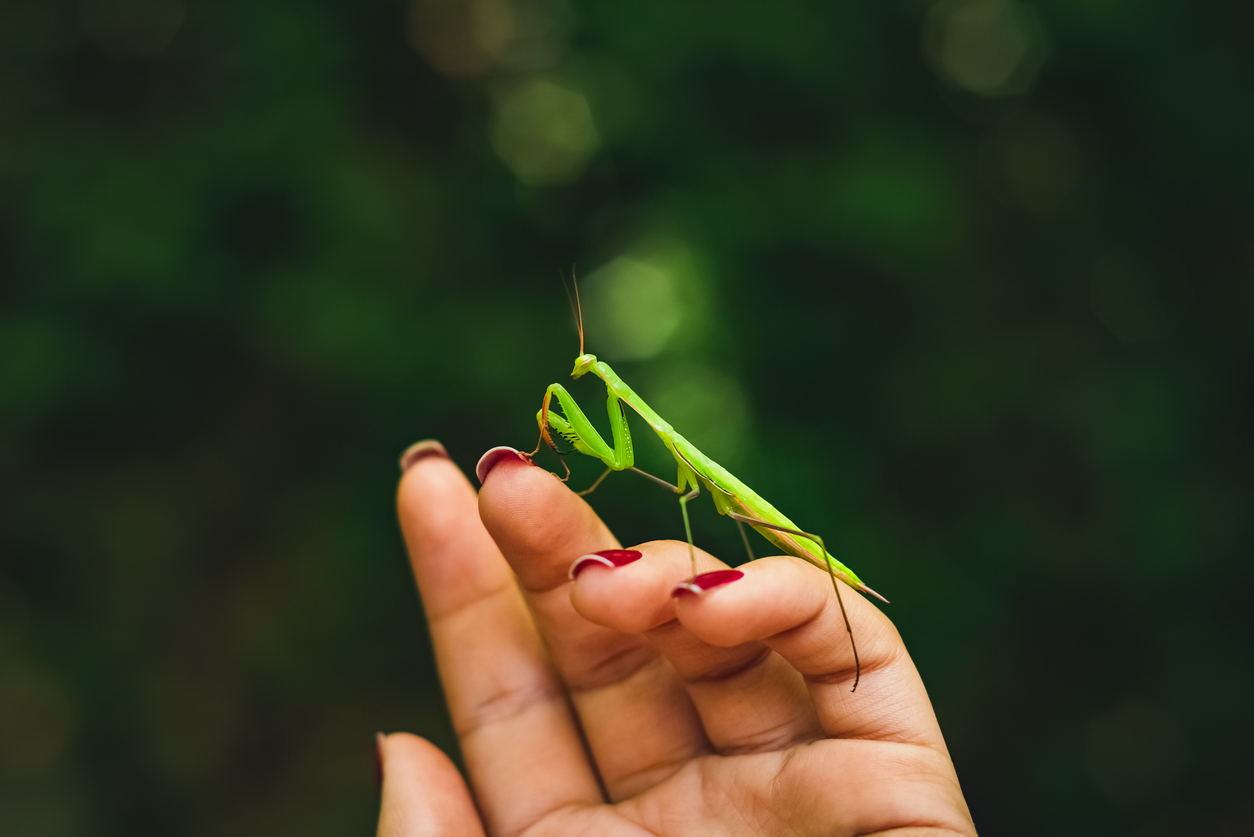
Just as there are several ways to get rid of crickets, there are multiple steps you can try to rid a yard or garden of grasshoppers.
Tools & Materials
Bobvila.com may earn a commission from purchases made through these links.
Working Time: 1 to 2 hours
Total Time: 6 to 9 months
Skill Level: Beginner
Estimated Cost: $20 to $120
STEP 1: Invite natural grasshopper predators to your garden.
One of the best natural pest control strategies for grasshoppers and other unwanted visitors is to make your garden welcoming to some of their natural predators. So, what kills grasshoppers? Swallows, toads, praying mantises, and small snakes are some natural predators of grasshoppers that are also harmless to have around the home.
Adding features to a garden that will attract these predators will help keep the grasshopper population from growing out of control. For example, you can add a bird bath fountain to attract swallows, a small pond to attract toads, or plant dill and marigolds to attract praying mantises.
STEP 2: Weed the garden and surrounding areas.
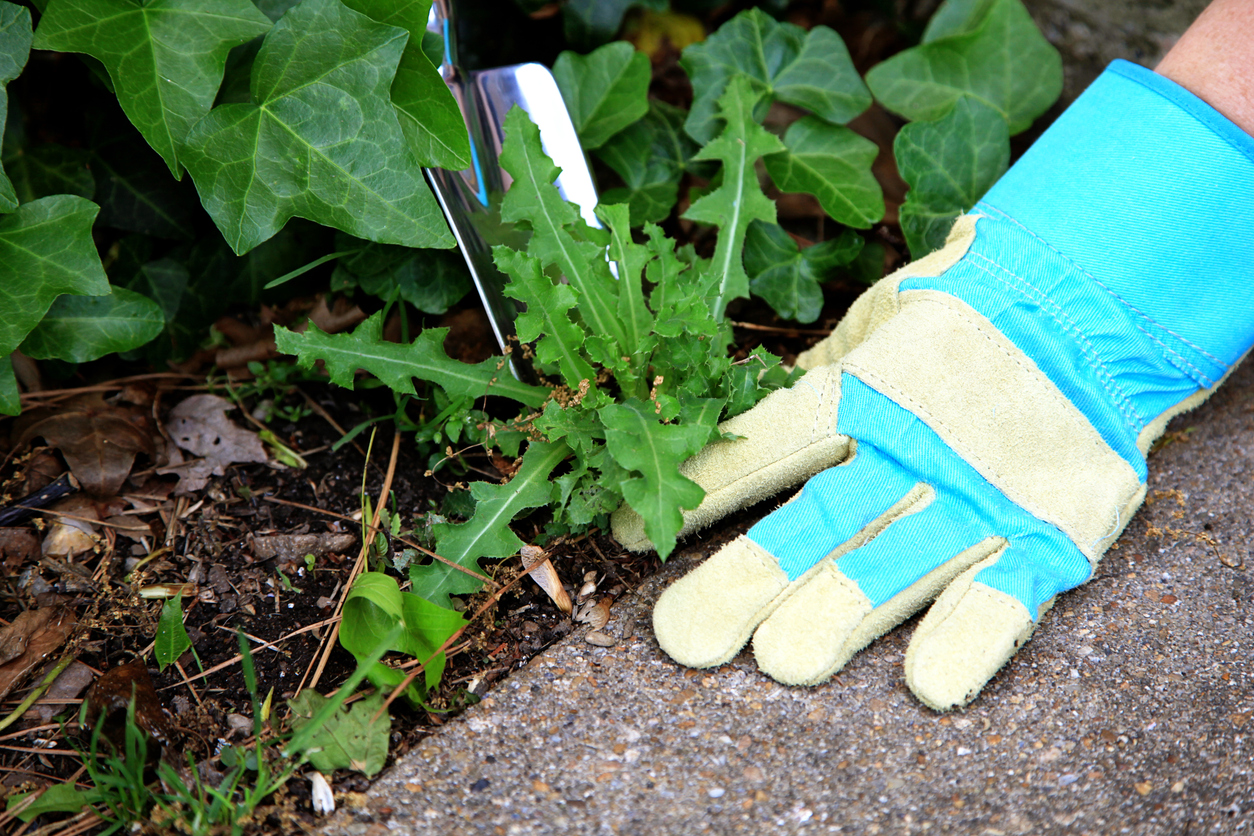
Weeding your garden and other areas of the lawn is another important measure to take when keeping grasshoppers away. Removing weeds and trimming back tall grasses will eliminate several hiding spaces where grasshoppers could be lurking. This will leave them exposed to natural predators, helping to further discourage them from your yard. Removing weeds in the garden will also help eliminate potential food sources for immature grasshopper nymphs after they hatch.
STEP 3: Till the soil to prevent female grasshoppers from laying eggs.
Tilling garden soil in the summer, fall, and early spring can also be helpful. Female grasshoppers lay their eggs in the soil, so tilling the areas where eggs may be laid will encourage females to find a different location. Tilling the soil in late fall and early spring also destroy any eggs that females laid in the summer or early fall. There is no need to till any deeper than 2 to 3 inches.
STEP 4: Create a strong-scented DIY spray to deter grasshoppers from visiting your garden.
Those wondering how to get rid of grasshoppers with vinegar can create their own DIY spray. There are several strong scents that grasshoppers do not like, including vinegar, garlic, and hot peppers. Mixing up a DIY grasshopper repellent with some of these ingredients and spraying it on garden plants and surrounding areas can help coax a smaller number of grasshoppers into relocating. However, when facing a large grasshopper infestation, DIY sprays are less effective.
Those searching for how to kill grasshoppers may have already heard that dish soap can be an effective ingredient. This is because dish soap breaks down the cuticle, or waxy coating, covering grasshoppers and other insects, causing dehydration. However, dish soap can also dry out the cell membrane of plants, which could cause them to die or become very unhealthy. So, it is not the best option to consider when looking to get rid of grasshoppers naturally.
STEP 5: Cover plants to prevent grasshoppers from causing damage to them.

Covering plants—particularly those that are more delicate or vulnerable—can also help protect them against grasshopper damage and remove some of the insects’ food sources. Use floating row covers to keep the grasshoppers away from these plants and help encourage them to move on to a new location. Just remember to combine this step with one or more of those listed above. It won’t be as effective at making grasshoppers leave your garden if they already laid eggs in the soil around covered plants, for example.
Final Thoughts
Grasshoppers may be considered a delicacy in some parts of the world, but when a grasshopper infestation hits your garden, it’s a different story. Using the above steps will deter grasshoppers from visiting your garden and encourage them to move on to a new location. Remember, though: Seeing a few grasshoppers in the yard is not a cause for concern. Grasshoppers are a beneficial part of your local environment. However, when dealing with an infestation or damage to garden vegetables, working quickly to treat grasshoppers and prevent future infestations can ward off larger numbers of these insects.
